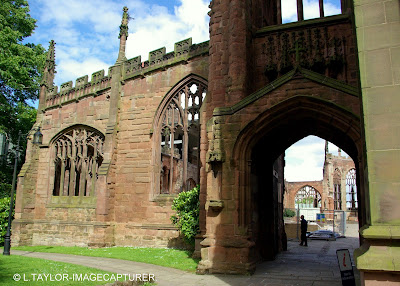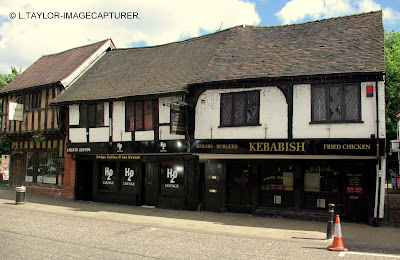~~~~<<<<>>>>~~~~
Sunday, 29 November 2015
OLD SIGNS.
Some people will not like this, some people will. I myself was undecided to publish these old signs. But I thought why not, after all they are part of our past history, as a lot of these signs you no longer see. The signs are self explanatory , so enjoy.
Sunday, 22 November 2015
AIRCRAFT #2.
LINK TRAINER type D.2.
Built in 1942 by Link Aviation Devices of New York, it was the original flight simulator which enabled pilots to practice instrument flying without leaving the ground. It was designed by Edwin Link who worked in a mechanical piano factory and used many of the same principles with vacuum operated bellows and electric motors to operate the unit. The instruments are duplicated on the desk which has a mechanical crab following the route taken by the pilot.
~~~~<<<<>>>>~~~~
JAGUAR T.2A XX829.
Two seat operational conversion trainer with secondary strike & ground attack capability.
Developed as a joint project between Britain and France xx829 flew for the first time on the 28th November 1974 and entered service with 54 (F) squadron on the 23rd December at RAF Coltishall. Later it flew with 6 squadron and finally back to 54 squadron. The aircraft is powered by two rolls Royce turbomeca adour mk104 turbofans, each rated at 5,320lbs thrust, or 8,040lbs afterburning thrust. The aircraft was fitted with one 30mm Aden cannon plus five external hardpoints for a total load of 10,000lb including a tactical nuclear weapon, bombs, rocket pods, air to air surface missiles and other weapons.
~~~~<<<<>>>>~~~~
BRITISH AEROSPACE SEA HARRIER F/A.2 ZA176.
Single seat multi role day/night all weather aircraft.
Aircrew:- one, Max speed- (high level) - mach 1.25, (low level) 736mph. Range - 576 miles, Service ceiling - 51,000ft, Loaded weight - 26,200lbs, Span - 27ft-3inches, Length - 47ft-4inch, Height - 12ft-2inch. Armament - Amraam and sidewinder air to air missiles, Sea eagle or alarm missiles. 2x30mm cannons, 540lbs or 1,000lb bombs. Self defence chaff and flares. Power Plant - one rolls Royce Pegasus 11 mk 106 engine, rated at 9,760 kgp (21,000lbs) static thrust.
~~~~<<<<>>>>~~~~
AVRO VULCAN B.2 XM594.
Long range medium bomber.
First flight from Woodford in 1963, entered service with 27 squadron in 1963. Carried a crew of five. Max speed- 645mph, Range - 4,750 miles, Service ceiling - 65,000ft. This aircraft is powered by four Bristol Siddeley Olympus 301 turbojets each rated at 20,000lbs static thrust. The aircraft could carry 21x1,000lb bombs or one Blue Steel Nuclear stand off bomb.
Vulcans wheel bay.
Vulcans bomb bay.
~~~~<<<<>>>>~~~~
LOCKHEED HERCULES C.3. (Tactical Transport).
The Lockheed c-130 Hercules was designed as a troop and freight carrying aircraft capable of operating from unprepared surfaces, because it was designed from the outset as a military cargo aircraft. The C-130 featured a rear ramp for ease of loading. At the time this was an innovation. The rear ramp also allows the air - dropping of supplies. The first prototype flew in 1954 and deliveries of the aircraft to the United States Air Force began in 1956. The RAF ordered sixty six Hercules and the first of these was delivered in 1966. More than 2300 Hercules have been built and there are more than forty variants of the type. The Hercules is used by more than 60 countries and has been in service with its original operator, the USAF,for more than 50 years. Type - medium range tactical transport, in service - 1967 - 2011, Engines-four 4,900hp Allison T-56 turboprops, Max speed - 375mph, Max altitude - 33,000ft, Airframe - all metal stressed skin, wingspan-133ft, Length - 113ft-6inches, Max loaded weight - 99,000lbs, Empty weight - 75,600lbs, Capacity - 128 passengers/96 stretchers, 64 paratroops, 8 pallets, 5 land rovers or an armoured personnel carrier.
~~~~<<<<>>>>~~~~
SIKORSKY MH-53 PAVE LOW.
Long range combat search and rescue helicopter.
Built as a Sikorsky S - 65/HH-53C -S1, This HH-53C helicopter ( officially known as the Stallion) was nicknamed the super jolly green giant. Primarily employed as a long range combat search and rescue helicopter, it was also used for covert operations - including special forces insertion and extraction. It was one of nine MH-53Hs converted to MH-53J Pave Low III. enhanced standard; providing uprated engines, more armour, forward looking infrared, a global positioning system, doppier navigation systems, terrain following and terrain avoidance radar, on board computer and integrated avionics. Pave refers to the all weather sensor system, precision avionics vectoring equipment. This particular aircraft was withdrawn from service in Iraq in September 2008.
~~~~<<<<>>>>~~~~
Sunday, 15 November 2015
COVENTRY ( revisited ).
I have covered Coventry in a previous blog but has I was sorting through the huge amount of photographs I have accumulated over the years, I came across a few more about Coventry, so here they are.
COOK STREET GATE.
Completed circa 1385 as part of the medieval town hall, which was demolished in 1662 by order of Charles II. Only two town gates have survived from the original twelve, this is the only functional gate. Presented to the city by Col.W.F.Wyley in 1913 and restored in 1918. The building is now a scheduled ancient monument.
View of the gate from the other side.
In the centre of the wooden arch beams.
~~~~<<<<>>>>~~~~
ST JOHN THE BAPTIST CHURCH.
This is a 14th century church.
~~~~<<<<>>>>~~~~
ST MICHAEL`S THE OLD CATHEDRAL.
Some more photos of the ruined St Michaels which I had not added to the last blog I did on Coventry.
St Michael's tower, the only part that is not in ruins from the bombing of Coventry in world war two.
~~~~<<<<>>>>~~~~
MEDIEVAL SPON STREET.
Spon street is an historic street in central Coventry, in the west midlands of England.. The street was once part of a route that ran from Gosford, in Oxfordshire to Birmingham - a route which remained intact until the 1960`s. With the construction of Coventry`s inner ring road, built to relieve traffic on the narrow city centre streets, Spon street was cut in half and the route severed. These photos are some of the medieval buildings on this street. They are used by a variety of shops and a public house (pub). Some of these buildings are not original to the street, but have been rebuilt there after being saved from demolition in other streets and a preservation order is in place to ensure their survival.
~~~~<<<<>>>>~~~~
Subscribe to:
Posts (Atom)





















































